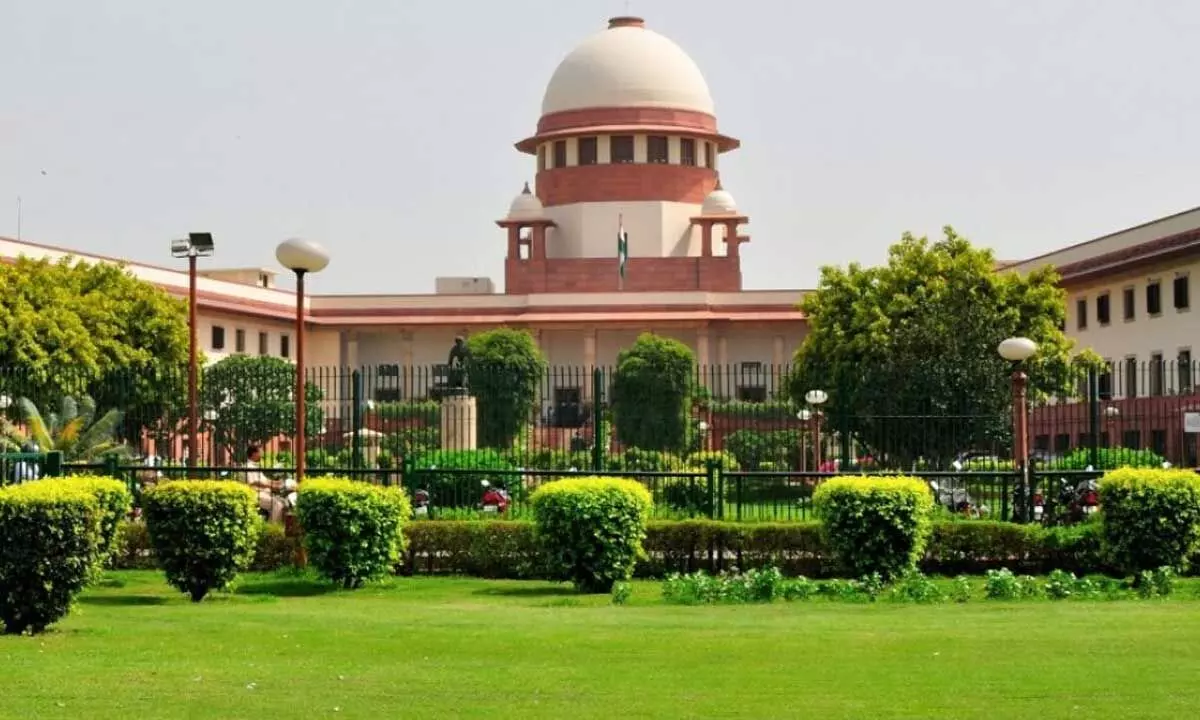Live
- Congress killers of Samvidhan: Modi
- Bejan Daruwalla’s horoscope
- Study warns: Ultra-processed foods may accelerate biological age
- CM pledges more political opportunities to Madigas
- Vizag attracts tourists as much as Kashmir
- Year-Ender 2024 Guide: Home remedies to relieve Period Pain.
- All India crafts mela begins today
- TTD gears up for Vaikunta Ekadasi fete
- Express Yourself
- Rajadhiraaj: Love. Life. Leela
Just In

Supreme Court
A Constitution Bench of the Supreme Court on Wednesday said it would examine the procedure followed and the manner in which the 2016 demonetisation exercise was carried out, before deciding if the issue is only academic now.
A Constitution Bench of the Supreme Court on Wednesday said it would examine the procedure followed and the manner in which the 2016 demonetisation exercise was carried out, before deciding if the issue is only academic now. Observing that it is aware of the "Lakshman Rekha" in matters of government policy, it posted the case to November 9.
Justice B V Nagarathna, one of the five judges of the Constitution Bench, said "The wisdom of the government is one aspect of the matter, and we know where the Lakshman Rekha is. But the manner in which it is done and the procedure is something which can be examined. But for that, we need to hear. Any declaration one way or the other is for posterity and I feel it is the duty of the Constitution Bench to answer it one way or the other. Section 26(2) of the Reserve Bank of India Act says that on recommendation of the central board of the RBI, the central government may, by notification in the Gazette of India, declare that with effect from a date specified in the notification, any series of bank notes of any denomination shall cease to be legal tender."
According to the petition before the SC, fixing the date from which the demonetisation would come into force is the substratum of power under section 26(2) and constitutes an "essential law making function" which cannot be delegated to be fixed by the central government on its own determination. "It is settled law that essential law making function cannot be delegated," the petition submits. The only way to save Section 26(2) from being ultra vires the constitution is to regard that the power to fix such a date contemplates a reasonable notice to the people at large, the petition suggests. Second, the petition argues that the precedent of 1978 – The High Denomination Bank Notes (Demonetisation) Act, 1978 repealing the High Denomination Bank Notes (Demonetisation) Ordinance 1978 – and Section 26A of the RBI Act, clearly suggest that demonetisation of this scale with such draconian effect can only be done by a statute of parliament.
Section 26A – inserted in the RBI Act in 1956 by parliament – makes it clear that notwithstanding anything contained in Section 26, no bank note of the denominational value of Rs 500, Rs 1,000 or Rs 10,000 issued before January 13, 1946, shall be legal tender in payment or on account. The point here is that in 1956, the then central government found it imperative to declare the pre-1946 high denomination currency notes as ceasing to be legal tender only through an amendment to the RBI Act and not through a gazette notification as has been done now.
During the arguments in the Supreme Court on November 15, the Attorney General Mukul Rohatgi distinguished demonetisation from the declaration that currency notes of a certain denomination cease to be a legal tender, saying while the former would require amending the RBI Act, the latter could be achieved through a gazette notification. This is because demonetisation would make even the keeping of a currency note which is not legal tender an offence and, therefore, for depriving the freedom of citizens, recourse to law is a must. Academic or otherwise, it would be of interest to know what the court thinks of it.

© 2024 Hyderabad Media House Limited/The Hans India. All rights reserved. Powered by hocalwire.com







